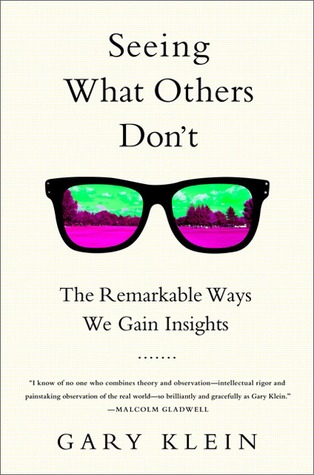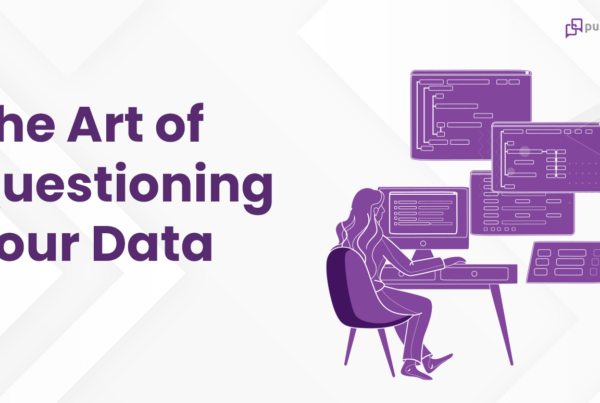
I always believe true Data Science is seeing what others don’t. It is as much an art on sense making that requires an unique mindset armed with insatiable curiosity, it takes time and is no walk in the park – to an extent to be equated to creating a piece of Art. Anyone can scribble or produce a bunch of charts. Very few can bring out insights or narrate a data story that is quite vivid and most importantly that makes sense and enables decision making.
In a world of ours where a metrics driven culture is often misconstrued to quantity over quality, with the number of scorecards in certain organizations even exceeding the number of employees, just like any other well-intended idea, we have lost sight of the art of true data sense making.
A metric or a chart should be thought provoking, leading the consumer to insights and hence affecting the decision making process in either an explicit or tacit way. Irrespective of the analytical methods, producing actionable insights in the end involves using our guts to make decisions and hence the analytic output that is produced for human consumption should aid the decision making in a positive way. Hence it is highly imperative that we pay attention to the tacit knowledge that supplements this decision making process and have a very clear understanding of how we construct our mental models.
Bottomline, it all boils down to having a convincing WHY, before the HOW and WHAT.
In that sense, most of my reading these days has been around seeking out knowledge on how humans consume information, make decisions and how we can influence the factors that aid decision making and our mental models. I personally feel, as a data sense maker (I would rather use this, to the heavily abused term these days of a Data Scientist) these are extremely important foresights to have for anyone producing insights that is consumed by others. Just like a great chef mastering an understanding of the taste palates before serving up his dishes.
I recently finished reading this wonderful book by the famous research psychologist Gary Klein, Seeing What others Don’t – Remarkable ways to gain Insights. Wish I had read this much earlier. It sure turned out to be a masterpiece, every page of it is filled with examples and concepts around sense making. Though the book is about the psychology behind how we humans normally seek our insights to make decisions, the same can be applied to the field of data sense making as well. In the end, Data and the Technology aspects of Data Science are only enablers to the end goal of sense making.
The entire book is grouped into three sections, starting with How do Insights get triggered, the Factors that interferes with Insights and How can we foster Insights. Well thought out sequence indeed.
He uses what is called as a Triple Path Model to resolve some of the myths behind insights. He sums up the mystery of insights like this:
The magic of insights stems from the force for noticing Connections, Coincidences and Curiosities; the force for detecting Contradictions; and the force of Creativity unleashed by desperation. That magic lives inside us, stirring restlessly.
Every chapter is filled with carefully chosen examples which we encounter in our daily life and hence would be easy to appreciate.
Just to give an example, having been a witness to the 2008 financial crisis, I was personally intrigued by the way few of the analysts made use of Contradiction Insights to predict the ensuing doom and some of them benefiting with riches.
Contradictions spark the emotional reaction ‘No Way!’
Curiosities make us wonder what’s going on, whereas Contradictions make us doubt – ‘that can’t be right’.
Contradiction paths have made a huge impact on insight generation, especially in the field of scientific research leading to many of the Eureka moments. While we are inclined to look for positive correlations all the time and there is a huge opportunity with data for negative tilts in scenarios like the Internet boom or the Financial crisis. Very few people saw it coming and even the ones who predicted it were frowned upon. It’s primarily due to our hidden bias towards seeing or talking about anything negative or unpleasant, especially when the world around is filled with glee of prosperity.
Another reason we normally avoid contradictions is because we are invariably frowned upon when the contradictions happen to fail, going against the majority view. It requires extreme amount of guts to be a contrarion and to stand up.
Other great insights I enjoyed reading are in the section on What interferes with Insights, especially the factors around our own Stupidity, being Dumb and the organizational structures and models that obscure Insights. As Daniel Kahneman profoundly quotes in his classic Thinking Fast and Slow, we vastly underestimate our stupidity and ignorance which has a huge impact on the quality of our insights.
a puzzling limitation of our mind: our excessive confidence in what we believe we know, and our apparent inability to acknowledge the full extent of our ignorance and the uncertainty of the world we live in.
Can’t agree more.
Bottom line, this book is a master piece for anyone working on data sensemaking and research. At least, I felt it that way.




